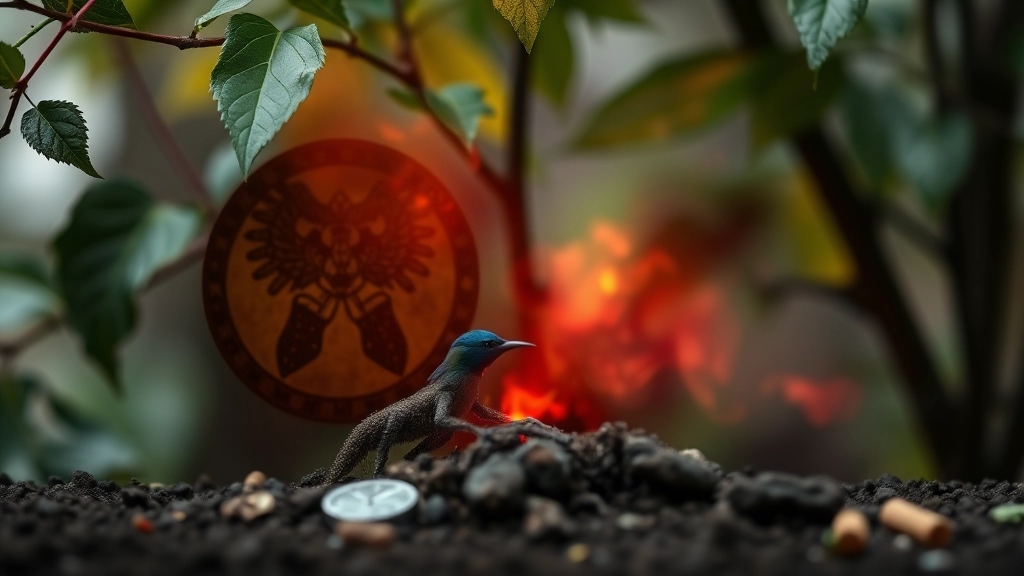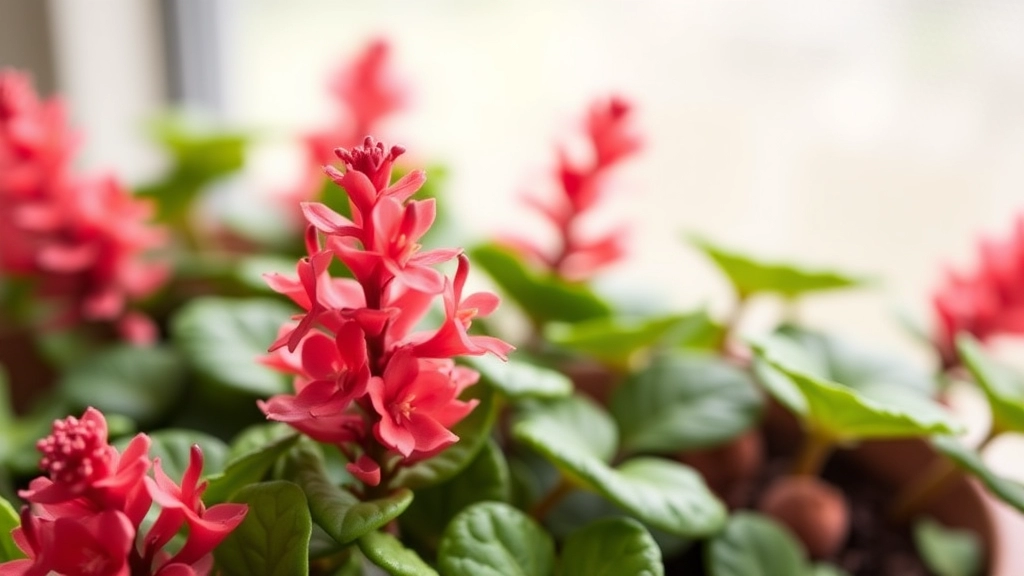Kalanchoe Tomentosa Toxicity
When it comes to Kalanchoe Tomentosa toxicity, it’s crucial to understand the risks this plant poses to our furry friends. Known as the “Panda Plant,” this succulent is popular for its unique appearance but can be harmful if ingested by pets like cats and dogs. Let’s dive into the toxic components and how they affect our beloved animals.
Symptoms of Ingestion
If your pet ingests Kalanchoe Tomentosa, you might notice symptoms like:
- Vomiting
- Diarrhoea
- Lethargy
These signs indicate potential poisoning, and it’s essential to act quickly. Knowing the severity of toxicity and the necessary emergency steps can make all the difference in ensuring your pet’s safety. Stay informed and keep your pets safe from this toxic plant.
When considering the safety of our furry friends, many pet owners often overlook the plants in their homes. One such plant, Kalanchoe Tomentosa, commonly known as the “Panda Plant,” harbours some toxic components that can pose serious risks to pets.
Kalanchoe Tomentosa contains cardiac glycosides, which are compounds that can disrupt normal heart function. These toxins can affect both cats and dogs, leading to potentially severe health issues.
### Key Toxic Components:
– **Cardiac Glycosides:** These compounds can cause irregular heartbeats and other cardiovascular problems.
– **Bufadienolides:** Another group of compounds found in Kalanchoe, which can also affect heart function and lead to toxicity.
Understanding these toxic components is crucial for pet owners. The more we know about what makes Kalanchoe Tomentosa dangerous, the better equipped we are to protect our pets. For more detailed information on how to care for this plant, you can refer to the [complete guide on Kalanchoe Tomentosa care](https://planthq.org/how-to-care-for-panda-plant-kalanchoe-tomentosa-a-complete-guide/). Additionally, if you’re interested in learning about different varieties of this plant, check out the [varieties and care tips for Kalanchoe Tomentosa](https://planthq.org/types-of-kalanchoe-tomentosa-varieties-and-care-tips/).
How Kalanchoe Tomentosa Affects Pets (Cats and Dogs)

Have you ever looked at your furry friend and worried about what they might munch on? If you have Kalanchoe tomentosa, also known as “panda plant,” in your home, you might want to pay extra attention.
This charming succulent is not just a pretty face; it comes with a hidden danger for our beloved pets. Kalanchoe contains compounds called bufadienolides, which can cause some serious issues for cats and dogs.
What Happens When Pets Ingest Kalanchoe?
When your pet takes a nibble of this plant, here’s what can happen:
- Gastrointestinal Distress: Your pet might experience vomiting or diarrhoea. This is their body’s way of saying, “Hey, something’s not right!”
- Heart Issues: More severe cases can lead to heart arrhythmias. This is when the heart beats irregularly, which can be quite alarming.
- Neurological Symptoms: In some instances, pets may show signs of lethargy or even seizures.
Real-Life Examples
Imagine your playful pup, always curious and sniffing around. One day, they decide to take a bite of your Kalanchoe. Suddenly, they’re not their usual bouncy self. You notice they’re drooling more than usual and seem a bit wobbly. That’s when the alarm bells should start ringing.
The Importance of Awareness
Being aware of how Kalanchoe tomentosa affects our pets is crucial. It’s not just about the plant looking nice in your living room; it’s about keeping our furry family members safe.
Common Symptoms of Kalanchoe Poisoning in Pets
As a pet owner, it’s natural to worry about the health and safety of your furry companions. One of the concerns that may arise is the potential poisoning from Kalanchoe tomentosa. Recognising the symptoms early can make a significant difference in your pet’s well-being.
Common Symptoms to Watch For:
- Vomiting: This is often the first sign that something is amiss. If your pet begins to vomit shortly after ingesting Kalanchoe, it’s crucial to take action.
- Diarrhoea: Loose stools or diarrhoea can occur as your pet’s body attempts to expel the toxic components.
- Lethargy: A noticeable decrease in energy or enthusiasm for play can indicate that your pet is feeling unwell.
- Loss of Appetite: If your pet suddenly shows disinterest in food, it could be a sign of distress.
- Abdominal Pain: Watch for signs like whining, restlessness, or a hunched posture, which may indicate discomfort.
- Cardiac Issues: In severe cases, Kalanchoe poisoning can lead to irregular heartbeats or other heart-related symptoms.
- Salivation: Excessive drooling might occur as your pet’s body reacts to the toxins.
- Seizures: Though rare, severe cases can lead to seizures, which require immediate veterinary attention.
Being aware of these symptoms can help you act quickly if your pet ingests Kalanchoe tomentosa. If you want to learn more about how to properly care for this plant to prevent such incidents, check out our care guide for Kalanchoe tomentosa.
Severity of Toxicity and Potential Health Risks

When it comes to Kalanchoe tomentosa, many pet owners may wonder just how dangerous this plant really is. Understanding the severity of its toxicity is crucial for safeguarding our furry friends.
Kalanchoe tomentosa contains compounds known as bufadienolides, which can be harmful to both cats and dogs. The level of toxicity varies, but even small amounts can lead to significant health issues.
Potential Health Risks:
- Gastrointestinal Distress: Ingesting Kalanchoe can lead to vomiting, diarrhoea, and abdominal pain.
- Cardiac Complications: More severe reactions may involve heart irregularities, which can be life-threatening.
- Neurological Symptoms: Tremors, lethargy, and even seizures can occur in serious cases.
It’s important to note that the severity of symptoms often depends on the amount ingested and the size of the pet. For example, a small dog may experience more severe symptoms than a larger breed after consuming the same amount of the plant.
## Emergency Steps if Your Pet Ingests Kalanchoe Tomentosa
If you suspect that your pet has ingested Kalanchoe Tomentosa, it’s crucial to act swiftly. The health and safety of your furry friend depend on your immediate response.
### 1. Assess the Situation
– **Stay Calm**: Your pet can sense your anxiety. Staying composed helps you think clearly.
– **Identify the Plant**: Ensure that it is indeed Kalanchoe Tomentosa. Familiarise yourself with its appearance.
### 2. Observe Your Pet
– **Check for Symptoms**: Look for signs of distress, such as vomiting, lethargy, or unusual behaviour.
– **Monitor Vital Signs**: Keep an eye on their breathing and heart rate.
### 3. Contact a Veterinarian
– **Call Immediately**: Provide details about the plant and the amount ingested.
– **Follow Instructions**: Your vet may guide you on immediate steps to take while you prepare to visit.
### 4. Gather Information
– **Document the Incident**: Note the time of ingestion and any symptoms observed. This will be helpful for the vet.
– **Bring a Sample**: If possible, take a piece of the plant with you to the vet for identification.
### 5. Do Not Induce Vomiting Without Advice
– **Avoid Home Remedies**: Inducing vomiting can sometimes do more harm than good. Always follow your vet’s guidance.
For more detailed information on how to care for this plant, you can refer to the [care guide for Kalanchoe Tomentosa](https://planthq.org/care-guide-for-kalanchoe-tomentosa-brown/). Additionally, if you’re interested in propagation, check out the [step-by-step propagation guide](https://planthq.org/how-to-propagate-kalanchoe-tomentosa-stepbystep-guide/).
Long-Term Health Effects of Kalanchoe Ingestion

So, you’re probably wondering: what happens if my pet nibbles on Kalanchoe Tomentosa?
The short answer? It can be a bit worrying.
While many pets may recover from a one-off incident, there can be long-term health effects that you might not even consider at first. Here’s what to keep an eye on:
- Heart Issues: Kalanchoe contains compounds that can affect heart function. Over time, this could lead to irregular heartbeats or even heart failure in severe cases.
- Kidney Damage: Some pets may experience kidney problems after ingesting Kalanchoe. This can manifest as increased thirst or urination, which you definitely don’t want to ignore.
- Gastrointestinal Upset: Even after the initial symptoms fade, some pets might have ongoing digestive issues. This could include chronic vomiting or diarrhea.
- Behavioral Changes: If your pet seems more lethargic or less interested in playtime, it could be a sign of lingering effects from the poisoning.
- Recurrent Symptoms: In some cases, pets might experience a resurgence of symptoms long after the initial ingestion. This can be frustrating and concerning for pet owners.
If you notice any of these signs, it’s crucial to consult your vet. They can help determine if there’s a connection to Kalanchoe ingestion.
How to Prevent Kalanchoe Poisoning in Pets
As we delve into prevention, it’s crucial to consider how easily pets can access harmful plants like Kalanchoe tomentosa.
Understanding the Risks
Pet owners often worry about their furry friends nibbling on houseplants.
Here are some effective strategies to keep your pets safe:
- Placement Matters:
- Keep Kalanchoe and other toxic plants out of reach.
- Use high shelves or hanging planters to deter curious pets.
- Pet-Friendly Zones:
- Designate specific areas in your home where plants are allowed.
- Ensure these areas are inaccessible to pets.
- Educate Yourself:
- Familiarise yourself with toxic and non-toxic plants.
- Create a list of safe alternatives for your home.
- Use Barriers:
- Consider using pet gates or barriers to restrict access to certain rooms.
- This can help keep your pets away from plants altogether.
- Monitor Behaviour:
- Keep an eye on your pets’ habits.
- If they seem overly interested in a plant, it might be time to remove it.
- Provide Alternatives:
- Offer pet-safe plants for your furry friends to explore.
- Consider cat grass or other non-toxic options to satisfy their curiosity.
By implementing these strategies, you can significantly reduce the risk of Kalanchoe poisoning in your pets.
So, you’ve learned about the dangers of Kalanchoe tomentosa for your furry friends. It’s only natural to wonder what plants you can safely bring into your home without putting your pets at risk.
Here are some pet-friendly plant alternatives you might consider:
– **Spider Plant (Chlorophytum comosum)**
These beauties are not just easy to care for; they’re also non-toxic to pets. Plus, they help purify the air!
– **Boston Fern (Nephrolepis exaltata)**
A lush and vibrant option that’s safe for cats and dogs. Just keep it slightly moist, and it’ll thrive.
– **Areca Palm (Dypsis lutescens)**
This palm adds a tropical vibe to your space and is safe for your furry companions.
– **Bamboo Palm (Chamaedorea seifrizii)**
Another palm that’s not just stylish but also pet-friendly. It’s great for low-light areas.
– **Parlor Palm (Chamaedorea elegans)**
This one’s a classic! It’s hardy, easy to maintain, and safe for pets.
– **Calathea (Calathea spp.)**
With stunning patterns on its leaves, Calathea is a non-toxic choice that can brighten up any room.
– **African Violet (Saintpaulia)**
If you’re after a flowering plant, these are safe for pets and add a pop of colour.
If you’re interested in plants that offer both aesthetic and health benefits, you might want to explore the [medicinal uses of Kalanchoe blossfeldiana](https://planthq.org/kalanchoe-blossfeldiana-medicinal-and-decorative-uses/) or the [health benefits of Kalanchoe pinnata](https://planthq.org/health-benefits-of-kalanchoe-pinnata-a-complete-guide/).
Tips for Choosing Pet-Friendly Plants:
– Always check labels or do a quick search to ensure a plant is non-toxic.
– Keep plants out of reach if your pet is a curious nibbler.
– Rotate plants and monitor your pet’s behaviour around them.
FAQs on Kalanchoe Tomentosa Toxicity
Is Kalanchoe Tomentosa toxic to pets?
Yes, Kalanchoe Tomentosa, also known as the “panda plant,” contains compounds called bufadienolides, which are toxic to both cats and dogs.
What are the initial symptoms if my pet ingests Kalanchoe Tomentosa?
Initial symptoms can include vomiting, diarrhoea, and abdominal pain. These signs indicate gastrointestinal distress.
Can Kalanchoe Tomentosa cause heart issues in pets?
Yes, in more severe cases, ingestion of Kalanchoe can lead to heart arrhythmias, which are irregular heartbeats and can be life-threatening.
What neurological symptoms might my pet exhibit after ingesting Kalanchoe Tomentosa?
Neurological symptoms can include tremors, lethargy, and even seizures in serious cases.
Are there long-term health effects from Kalanchoe ingestion?
Yes, long-term health effects can include heart issues, kidney damage, gastrointestinal upset, behavioral changes, and recurrent symptoms.
How does the severity of symptoms vary among pets?
The severity of symptoms often depends on the amount ingested and the size of the pet. Smaller pets may experience more severe symptoms than larger ones after consuming the same amount of the plant.
What should I do if I suspect my pet has ingested Kalanchoe Tomentosa?
If you suspect your pet has ingested Kalanchoe Tomentosa, it is crucial to consult your vet immediately. Early intervention can prevent severe health complications.
Can pets recover from Kalanchoe ingestion?
Many pets can recover from a one-off incident with proper veterinary care. However, some may experience long-term health effects that require ongoing monitoring and treatment.
How can I prevent my pet from ingesting Kalanchoe Tomentosa?
To prevent ingestion, keep Kalanchoe Tomentosa out of reach of your pets. Consider placing the plant in areas that are inaccessible to curious cats and dogs.
References
-
Kalanchoe – Pet Poison Helpline
-
Kalanchoe – ASPCA
-
Plants Poisonous to Pets – Vetwest Animal Hospitals
